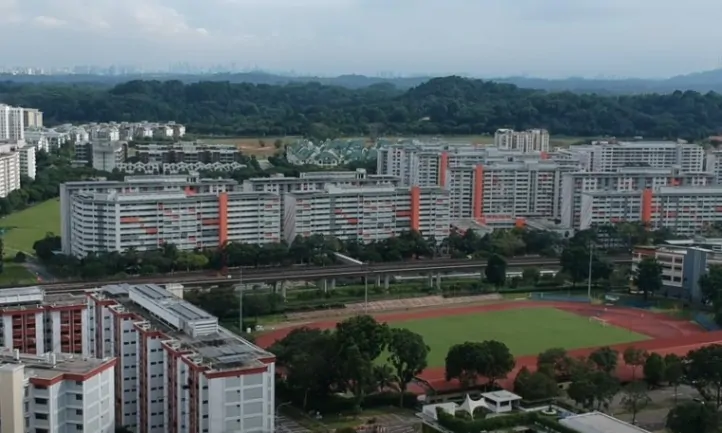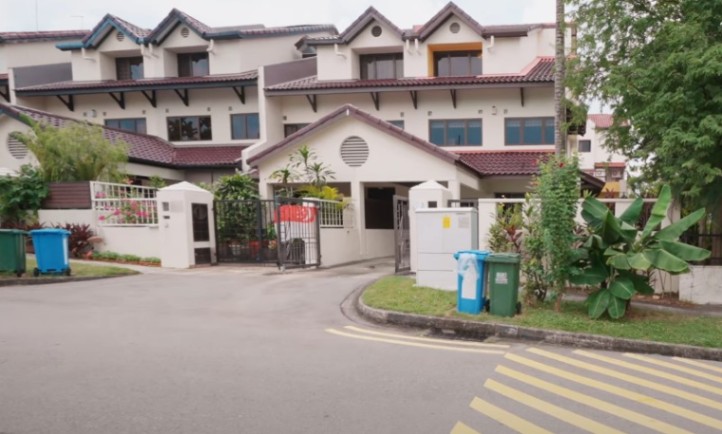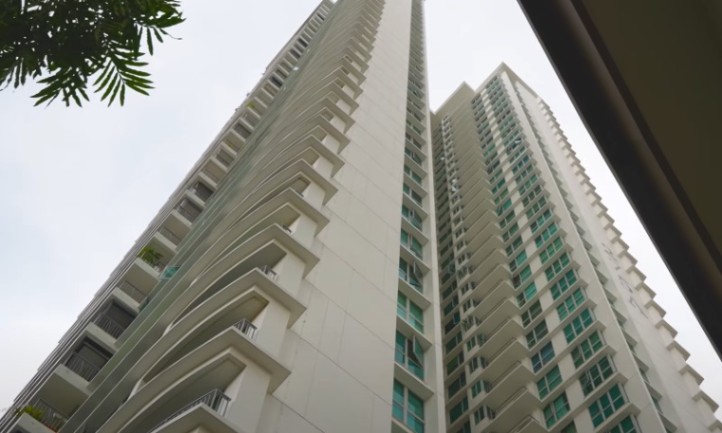If you’re raising children in Singapore, the place you call home can quietly shape almost every part of your family’s day. The school your child gets into, how long your commute lasts, whether grandparents can help after school, even the parks your kids play in on weekends – all of it starts with your address.
The good news is that Singapore’s housing ecosystem is designed with families in mind. From public flats to private condos, from proximity rules to playgrounds under your block, there’s a lot you can plan for if you know where to look.
Today, we will discuss the main housing paths for families, with clear notes on eligibility, size, grants, and lifestyle perks. Let’s get started.
Four Main Housing Paths for Families in Singapore

Families in Singapore usually start their housing search around four main paths, each with its own mix of costs, space, and rules. Knowing the broad outlines helps you narrow your options fast.
HDB Flats
Public housing developed by the Housing & Development Board (HDB) is where most families start. New flats are sold via Build-to-Order (BTO) launches, while resale flats can be bought in the open market.
From October 2024 onward, new BTOs come in three categories: Standard, Plus, and Prime. Each category carries its own minimum occupation period (MOP) and rental rules:
- Standard – 5-year MOP, full-flat rental allowed after MOP (subject to HDB rules)
- Plus – 10-year MOP, no whole-flat rental even after MOP, resale income ceiling applies
- Prime – 10-year MOP, no whole-flat rental, tighter restrictions and subsidy recovery on resale
Typical Family Layouts
- 4-room flats (about 90 sqm): three bedrooms and two bathrooms; most common family layout
- 5-room flats (about 110 sqm): larger living space for a study or playroom
- 3Gen flats (about 115 sqm): four bedrooms, extra bathrooms; for multi-generation living
Tip: If grandparents play a big role in childcare, consider a 3Gen flat or use the Proximity Housing Grant to live within 4 km of your parents.
HDB flats remain the most affordable entry point to stable housing. For resale purchases, families can stack up to S$230,000 in grants if eligible, including the Enhanced CPF Housing Grant, CPF Housing Grant for Resale Flats, and the Proximity Housing Grant.
HDB and URA release quarterly price data: useful for gauging market heat before committing. In Q2 2025, HDB’s Resale Price Index rose 0.9 percent to 202.9, a modest uptick compared to previous years.
Renting an HDB Flat
Families testing an area often start by renting. Owners must have HDB approval to rent out whole flats. Rules include a minimum 6-month lease, no short-term stays, and caps on tenant numbers.
Executive Condominiums (ECs)
ECs were created for middle-income Singaporean families who want condo-style facilities without fully private prices. They’re built by private developers but follow HDB rules for 5 to 10 years before full privatisation.
Who can buy: Singapore Citizen families that meet HDB’s EC eligibility criteria and family nucleus rules.
Key Rules
- 5-year MOP before resale to Singapore Citizens and PRs
- Fully private after 10 years, at which point foreigners can buy
Why families choose ECs: pools, water play areas, BBQ pits, gyms, and kid-friendly features that rival private condos. Many ECs are sited near MRT lines or upcoming regional centres.
Private Condominiums
Private condominiums are the go-to for many expat families and locals who want flexibility. Non-landed private property can be purchased by foreigners without special approval, unlike landed houses.
Renting: Minimum stay is three consecutive months. Short-term stays below three months are not allowed. URA’s quarterly stats show rents inching up 0.8 percent in Q2 2025 after a softer Q1, so families timing renewals should budget accordingly.
Private condos vary from modest walk-ups to luxury towers with direct MRT access. Pools, gyms, playgrounds, and 24/7 security make them attractive if you’re juggling work and parenting.
Landed Houses

Terraces, semi-detached, and bungalows offer space and privacy but come with tighter rules. Foreigners need approval under the Residential Property Act for most landed properties, with limited exceptions.
Approval weighs factors such as occupation and economic contribution, and it’s not automatic. Families planning a landed purchase as non-citizens should engage legal counsel early and expect longer timelines.
Renting landed property follows private rental rules: minimum three-month stays and no short-term lets without specific approval.
Matching a Home to Your Daily Life
A home sets the rhythm of your family’s everyday life. From school runs to weekend play, the right choice makes routines smoother and leaves more room for the moments that matter.
School Admissions and Home Distance
In Singapore, where you live can affect which primary school your child gets into. For Primary 1 registration, proximity is a formal priority factor.
If a school has more applicants than places, priority goes first to Singapore Citizens, then Permanent Residents, and within each group to those living closer to the school. The Ministry of Education recognises three Home-School Distance categories:
- Inside 1 km
- 1–2 km
- Beyond 2 km
The address used for P1 should match the parents’ NRIC address. MOE requires families who gained priority through distance to reside at that address for at least 30 months from the start of registration, or risk transfer.
Tip: If you’re moving to be near a popular school, check MOE’s OneMap School Query tool the same year you register. MOE can and does enforce address rules.
Commute and Weekend Life

Singapore’s Park Connector Network (PCN) links neighbourhoods to parks and waterfronts, a big perk for prams, scooters, and weekend rides. NParks’ portal and NEAR app show family-friendly routes and events.
If outdoor time matters to you, look at estates that sit on or near PCN spines. The Land Transport Authority recognises Park Connectors as essential links between major parks and nature sites.
Access to Preschools and Childcare
The Early Childhood Development Agency (ECDA) and LifeSG both offer preschool search tools. You can filter by location, vacancies, and programme type, and even check upcoming preschools. This is crucial for families trying to keep both primary and preschool within a short walk.
HDB in Detail

HDB flats aren’t just a single format. They come in different sizes, layouts, and rules that affect how your family lives day to day.
Knowing the basics on unit types, new classifications, and available grants can help you match your budget with the space and stability you need.
Flat Types That Fit Families
- 4-room and 5-room flats: staples for most families of 3 to 5 members
- 3Gen flats: support multi-generation living, about 115 sqm with four bedrooms and extra bathrooms; resale restricted to eligible families
Grants That Move the Needle
- Enhanced CPF Housing Grant (EHG): up to S$120,000
- CPF Housing Grant for Resale Flats (Families): up to S$80,000 for 2–4 room flats, up to S$50,000 for 5-room or larger
- Proximity Housing Grant (PHG): S$30,000 if living with parents or child, S$20,000 if within 4 km
Stacking these grants can dramatically lower upfront costs for first-timers.
Renting Rules That Matter for Families
Whether you start with a one-year lease or plan a longer stay, knowing the legal minimums can save headaches:
- HDB rentals: minimum 6-month stay per application, with maximum periods varying by tenant citizenship. No short-term stays.
- Private rentals: minimum 3-month stay. Short-term accommodation in private homes is illegal without specific approval.
- Occupancy cap relaxation: HDB and URA temporarily raised the unrelated-occupant cap for larger units through 31 Dec 2026, relevant for extended families or live-in helpers plus relatives.
Choosing a Neighbourhood With Kids in Mind
Finding the right neighbourhood is about more than just the flat or condo itself. It’s about making sure schools, parks, childcare, and daily essentials are close enough to keep family life smooth and stress-free.
A Simple Checklist
- School access: shortlist schools, then check Home-School Distance via MOE and OneMap in the registration year.
- Transport: aim for walking distance to an MRT or express bus corridor.
- Parks and PCN: estates with connectors to East Coast Park, Bishan-Ang Mo Kio Park, or the Rail Corridor are gold for outdoor time.
- Preschools: confirm vacancy using ECDA and LifeSG tools before you secure a lease or exercise an Option to Purchase.
- Family services: polyclinics, libraries, sports complexes, hawker centres, and childcare clusters are broadly distributed in HDB towns, including newer towns like Tengah with smart-estate features and EV-ready carparks.
Tip: Parents sometimes add small touches to make a new flat feel like home for children, from wall decals to personalised acrylic keychains for their schoolbags.
Where Families Often Look
Newer HDB towns and EC clusters near PCN spines and upcoming MRT lines often offer kid-friendly layouts and more playgrounds. Tengah’s plans illustrate how greenery, smart features, and EV readiness are becoming standard.
Mature estates offer larger resale flats and established schools but at higher prices. Track HDB’s quarterly data to gauge how much of a premium you’re paying.
Comparing the Main Options for Families
Option
Who Can Buy
Family Fit
Typical Size/Layout
Key Restrictions
Renting Rules
HDB Standard BTO
Singapore Citizens and eligible families
First-home families planning for stability
4-room and 5-room common; 3 bedrooms typical
5-year MOP, then whole-flat rental allowed subject to HDB rules
As landlord: min 6 months. As tenant: owner must register tenancy with HDB
HDB Plus BTO
Singapore Citizens and eligible families
Families who want better locations and can accept longer lock-in
Same layouts as Standard
10-year MOP, no whole-flat rental even after MOP, resale buyer income ceiling
Same as HDB overall for rentals
HDB Prime BTO
Singapore Citizens and eligible families
Families targeting top-central locations
Same
10-year MOP, no whole-flat rental, subsidy recovery on resale
Same as HDB overall for rentals
HDB Resale
Citizens and PRs, with grants for first-timers
Families needing space soon or specific school distance
Older 4- and 5-room often have larger living rooms
No BTO MOP, but standard HDB rules apply post-purchase
HDB rental rules apply. Grants up to S$230k stack may apply
3Gen HDB
Eligible multi-generation families
Grandparents on board for caregiving
About 115 sqm, 4 bedrooms, extra bathrooms
Resale only to eligible multi-generation buyers
As above
Executive Condominium
Singapore Citizen families meeting EC eligibility
Mid-income families wanting condo facilities at lower entry price
Condo-style 3- and 4-bedroom units common
5-year MOP, partial privatisation at 5 years, fully private at 10
Private rental rules after full privatisation
Private Condominium
Citizens, PRs, foreigners
Maximum flexibility, rich facilities, broad locations
Wide range
No HDB-style MOP
Min 3 months per lease. No short-term stays
Landed House
Citizens freely; foreigners need LDAU approval
Large families who prioritise space and privacy
Terraces to bungalows
Foreign approval required, limited supply
Min 3 months per lease
Budgets, Market Tempo, and Timing Moves With Kids
Market direction matters. HDB’s Resale Price Index rose 0.9 percent in Q2 2025, the lowest quarterly growth since 2020, suggesting some cooling. Private residential rents ticked up 0.8 percent in Q2 2025 after a softer Q1. Families switching leases or moving from rent to buy should factor these shifts.
Combine grants like EHG, CPF Housing Grant for Resale, and PHG to reduce cash outlay. First-timer couples near parents can reach up to S$230,000 in stacked support if they meet income ceilings and other conditions.
Population context also helps explain policy shifts. Singapore’s resident Total Fertility Rate hit 0.97 in 2023, while the total population stood at 6.04 million as of June 2024. New classifications and family-oriented policies aim to support stable home ownership and balanced towns.
Practical Scenarios

Life rarely matches a brochure, so a few real-world setups can help you picture how the housing rules and options actually play out for families in Singapore.
Local Family With Preschooler and P1 in Two Years
Shortlist two or three primary schools. Use MOE distance rules and check OneMap’s School Query the same year you intend to register.
If you need to move, complete the purchase or lease and update NRIC addresses well before the registration window. Remember MOE’s 30-month stay requirement once you secure a place by distance.
Consider a Plus BTO for proximity with long-term stability through primary school, or a larger resale HDB near the 1 km ring if you cannot wait for keys. Use ECDA and LifeSG to lock in preschool care nearby.
Expat Family Arriving on a 2- to 3-Year Assignment
You will likely rent a private condo or HDB. Private leases must be at least three months, HDB at least six months. Prioritise developments with strong bus or MRT access and on-site preschools or nearby centres, then check vacancies using LifeSG.
If you plan to buy, non-landed private is the path of least resistance for foreigners. Landed requires LDAU approval.
Multi-Generation Family With Active Grandparents
A 3Gen HDB keeps everyone under one roof with enough bathrooms and bedrooms. Know that resale is restricted to other multi-generation families, which limits your future buyer pool.
If you prefer separate households, use the Proximity Housing Grant to live within 4 km and still share caregiving.
How to Run Your Search Week by Week
@multazam_shah Look Left Look Right.. #agentmultazam #sgrealtor #realtoroftiktok #ejenrumah #fyp #realtoroftiktoksg #lookleftlookright #singaporeelections2025
♬ original sound – Multazam Shah | Realtor – Multazam Shah | Realtor
Finding the right home for your family can feel less overwhelming when you break the hunt into clear steps.
A week-by-week plan keeps the process moving and helps you focus on what matters most at each stage.
Week 1: Budget and Home Type
Decide on HDB BTO, HDB resale, EC, or private based on eligibility and timing. Study Standard vs Plus vs Prime rules to avoid surprises later.
Week 2: Schools and Preschools
Pull a list of schools, check Home-School Distance rules and plan for address verification. Use ECDA and LifeSG to map preschool options against candidate blocks or condos.
Week 3: Micro-Location
Walk the PCN and nearby parks on a weekend morning. Time the door-to-door commute during rush hour. Confirm whether the estate has the amenities you want – sports, libraries, hawker centres, polyclinics.
Week 4: Contracts and Compliance
For rentals, ensure the lease length meets the legal minimum, and that the owner has HDB approval if you rent an HDB. For purchases, cross check grants and eligibility, and watch quarterly data to avoid buying at the top of a micro-cycle.
Final Thoughts
Singapore’s housing system gives families a range of structured choices. HDB’s new Standard-Plus-Prime rules and the EC path offer clear tradeoffs between affordability and flexibility. For newcomers, private condos provide straightforward entry and the amenities kids tend to love.
None of the options fit everyone equally. The key is to start with how your family spends a normal weekday and work backward from there – school distance, reliable transport, parks, and childcare capacity. When those line up, everything else in family life starts to feel easier.

